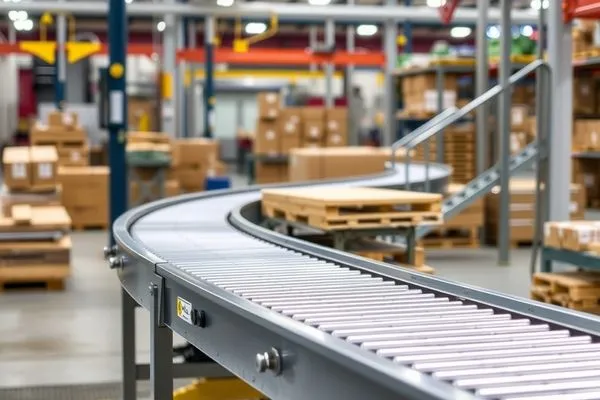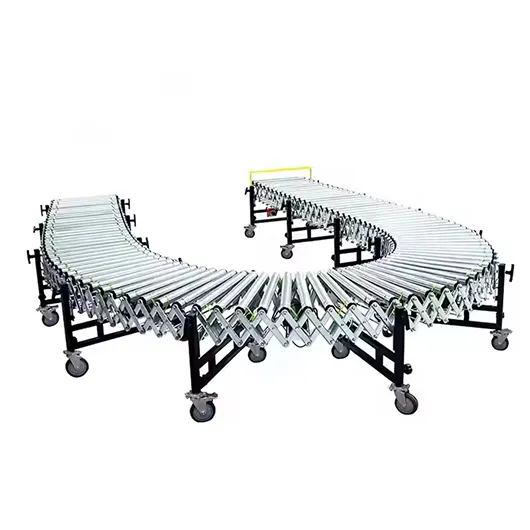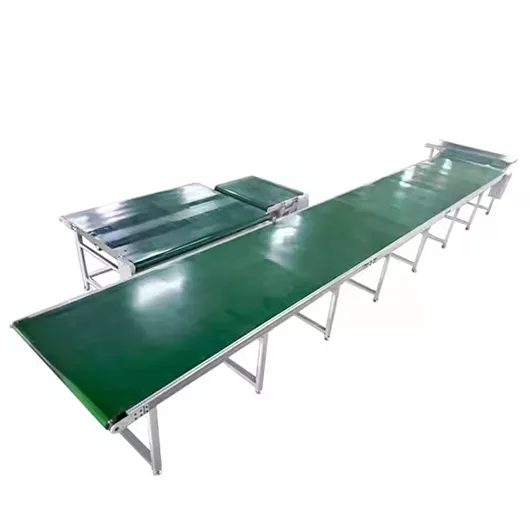Um zu vermeiden, dass Ihre Anfrage verspätet beantwortet wird, geben Sie bitte Ihre WhatsApp-/Skype-Adresse zusammen mit der Nachricht an, damit wir Sie gleich beim ersten Mal kontaktieren können.
Wir werden Ihnen innerhalb von 24 Stunden antworten. Wenn für dringenden Fall, fügen Sie bitte WhatsApp/WeChat: ,. Oder rufen Sie direkt an.
Die Wahl des richtigen conveyor chain feels overwhelming; pick wrong and downtime soars.
Every hour your line stops, profit leaks and customer trust erodes.
This guide makes selecting a high-quality, reliable chain simple, saving you time, money, and headaches.
The most common conveyor chain types are roller, engineering class, leaf, and attachment chains. Each chain type excels in specific material handling applications—understanding the differences ensures smooth and efficient production with minimal maintenance.
A conveyor chain is a series of journal bearings interconnected by pins, link platesund chain rollers, forming a flexible mechanical backbone that conveys goods along a production line. In our own automatic packaging machinery, these chains are the silent heroes that transport cartons, pallets, and parcels from station to station.
Core Facts at a Glance
| Metrisch | Value | Why it Matters |
| Typical pitch (mm) | 25.4 – 76.2 | Matches sprocket number of teeth to load |
| Safe working load | 1.2 kN – 240 kN | Determines capacity for heavy loads |
| Service life improvement with proper oiling | ↑ 40 % | Highlights role of lubrication |
| Downtime reduction after chain upgrade (case study) | ↓ 32 % | Shows ROI for better reliability |
“Conveyor chains are designed to streamline material handling solutions—downtime drops while throughput climbs.” — Field Engineer, Stars Creativity®
Key phrases fulfilled here: chains are designed, material handling solutions, series of journal bearings.
Explore an automated conveyor system in action

A roller chain uses cylindrical rollers that rotate on bushings. When the chain roller revolves around the sprocket, friction drops dramatically, letting the line glide smooth and efficient along the conveyor track.
Stat: Roller chains are widely used in 70 % of high-speed packaging lines because they balance strength with quiet operation.

Internal link: For heavy cartons, see our powered roller conveyor system.
There are three main types of conveyor chains you’ll encounter on the factory floor:
| Chain Type | Am besten für | Notable Feature |
| Standard Roller Conveyor Chain | Everyday cartons & totes | Economical, fast, come in various types (single, double pitch) |
| Engineering Class Chains | Heavy-duty bulk or abrasive goods | Oversized pins & bushings for heavy loads |
| Leaf Chains | Vertical lifts & counterweights | Compact, high tensile strength |
Each type of chain solves different Materialtransport challenges.
Case Study – An automotive plant swapped a light roller chain for an engineering steel chain on its paint-shop skid line. Result: Zero breakages across two million cycles.
Chains are used because their modular design reduces downtime versus welded conveyor belts.
Eine attachment chain features custom lugs, extended pins, or bent tabs to grip, push, or index products. Such chains are ideal when products must be used to move materials in a fixed orientation—think chocolate bars entering a flow-wrapper, or circuit boards queuing for inspection.
Bullet Snapshot
Internal link: See a heavy-duty slat chain conveyor with hinged attachments here.
When your process involves rock wool, castings, or clinker, a standard roller won’t last. Engineering class chains use thicker sidebars, forged chains or even engineering steel chains to shrug off shock loads.
| Merkmal | Standard Roller | Engineering Class |
| Base Material | Carbon steel | Steel chains with heat treatment |
| Working Load | Up to 30 kN | ↑ 200 kN |
| Typical Industries | Packaging & light assembly | Automotive, mining, biomass |
| Maintenance Window | 500 h lubed | 1 000 h lubed |
“Switching to engineering class raised uptime by 18 % on our pallet kiln conveyor,” notes our lead machinery engineer.
Remember: power transmission efficiency improves when chain pitch matches drive torque.
A conveyor chain behaves like a bicycle drivetrain on steroids: if the number of teeth on the sprocket and the roller diameter don’t match the chain pitch, shock loading and elongation occur. Proper sizing boosts power transmission efficiency by up to 7 %.
“Chains consist of a series of journal bearings; the wrong sprocket tears those bearings apart.” — Senior Reliability Engineer
Checklist for Long Chain Life
Quick-Stats Table
| Variabel | Poor Setup | Optimal Setup |
| Mis-aligned teeth | 1 mm | 0.1 mm |
| Chain pull (kN) | 22 | 16 |
| Energy use (kWh/day) | 480 | 448 |
Finding the right type of conveyor chain starts with three filters:
| Szenario | Recommended Chain Type | Reason |
| E-commerce sorting | Silent chains | Low noise < 70 dB, high-speed alignment |
| Kiln feed | Forged chains | Resists 450 °C & scale build-up |
| Up-Down lifts | Leaf chains | Compact yet 2× tensile strength |
| Bag palletizer | Double pitch roller | Fewer joints, lower cost per metre |
Need help? Our engineers size a chain for your specific throughput in < 24 h.
See how our PVC belt conveyor line integrates with forged chains.

When hygiene laws bite, stainless steel conveyor chains shine. Unlike carbon steel, the chain is made from 304 / 316 alloys that shrug off brine, acids, and CIP detergents.
Benefits in One Look
A dairy plant replaced carbon steel with stainless links and cut lube-freezing incidents to zero—boosting reliability during winter peaks.
Explore our stainless roller conveyor case study.
Every conveyor chain shares core chain components:
Bold Breakdown
Chains are available off-the-shelf, yet 60 % of our clients choose custom attachments for niche packaging lines.
Remember, chains come in ANSI, ISO, and BS standards; mixing specs invites jam-ups.
How do I size a sprocket for my chain conveyor?
Count the chain pitch in mm, select the matching number of teeth, and ensure the hub fits your shaft key. Our configurator auto-checks shear stress.
Are forged chains always better for heavy-duty work?
For impact loads and slag, yes. But for clean, high-speed cartons a standard roller often wins on cost.
Can chains be used on conveyor belts?
Yes—hybrid systems use belts on horizontal runs and chain conveyor lifts on inclines.
Do chains stretch?
Technically they wear at the pin-bush joint. 3 % elongation is the replacement trigger.
What’s a universal chain?
A modular design with slotted link chain plates that accept dozens of attachment styles—ideal for frequent changeovers.
Are chains lightweight alternatives available?
Plastic-bushed link chains shave 30 % mass where inertia matters.
Internal Links Recap